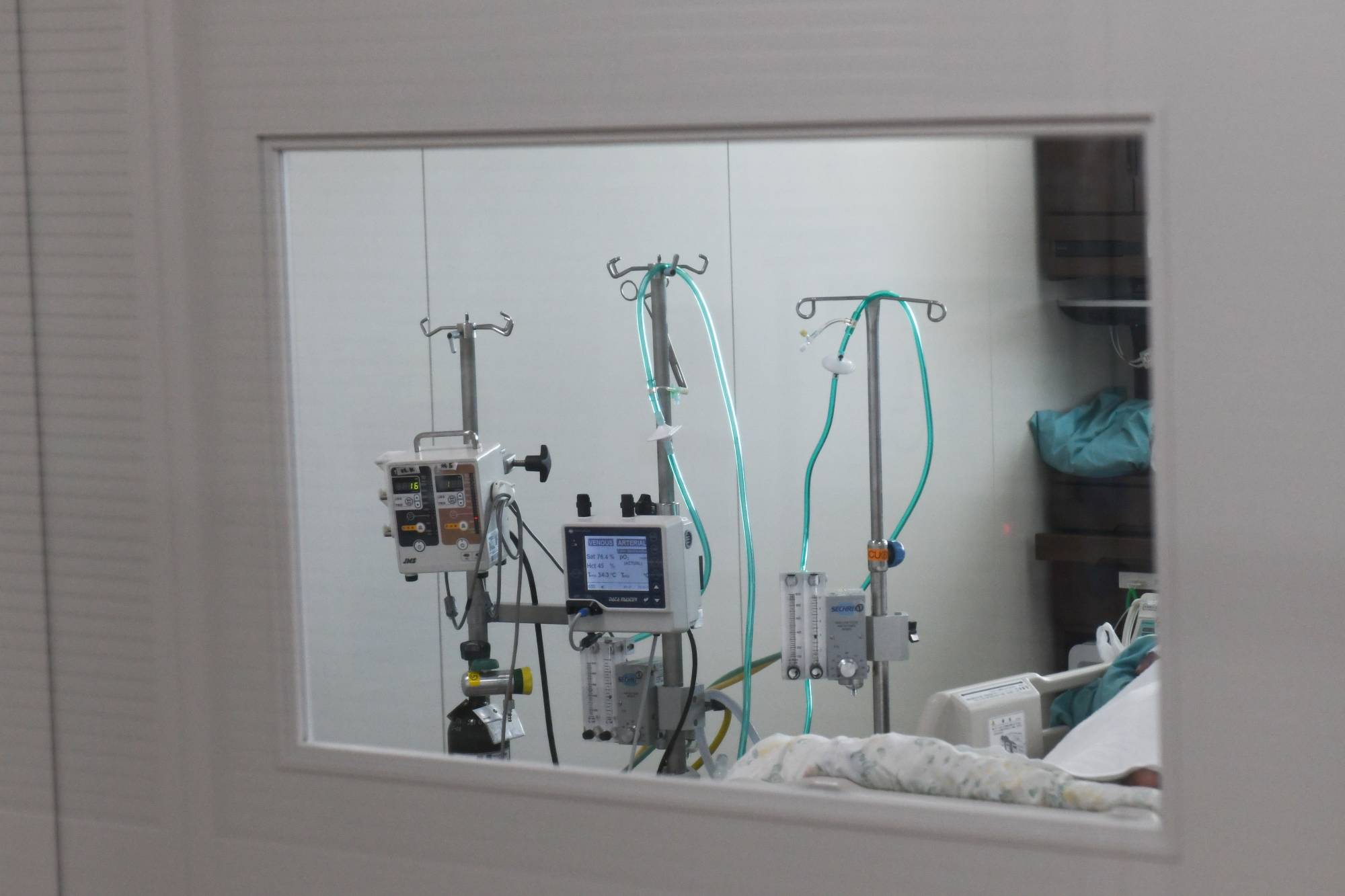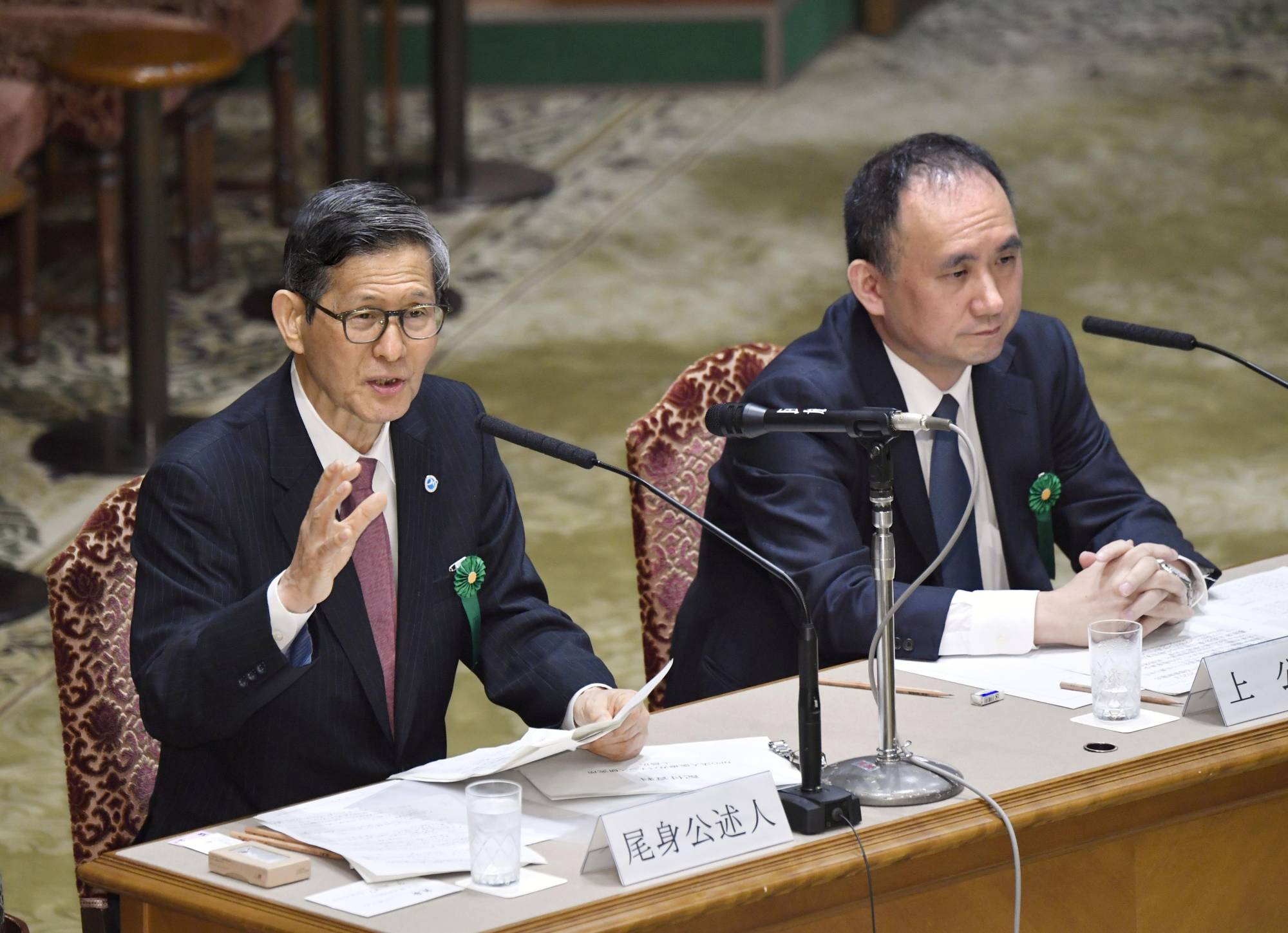Japan may be the envy of many other developed nations for having the highest number of hospital beds per capita and a relatively low number of cumulative COVID-19 cases, but that hasn’t prevented the system from nearly reaching its breaking point.
The spread of the highly contagious delta variant led to daily case loads of nearly 26,000 nationwide and more than 5,700 in Tokyo alone last month, which pushed the Suga administration to limit hospitalizations to patients with moderate or serious cases and those at high risk of developing severe symptoms.
Despite frequent check-ins by health centers, some of the more than 26,000 people who were isolating at home during the wave’s peak in Tokyo last month saw their condition quickly deteriorate in a matter of a few hours, leading to a rise in the number of those who have died at home. Twenty-one people with COVID-19, some of whom initially had mild symptoms, were found dead at home in Tokyo last month, double the number reported between December and July.
The health care crisis was deemed so severe that in late August, when around 70% of the hospital beds in central Tokyo for severe COVID-19 patients were occupied, the central and metropolitan governments jointly asked all hospitals in central Tokyo to secure more beds for COVID-19 patients or contribute resources in other ways for the first time.
In response, hospitals are projected to increase the total number of beds for infected patients to 6,651 by the end of September, though that’s still short of the metropolitan government’s goal of 7,000.
Tokyo Medical and Dental University Medical Hospital in Bunkyo Ward roughly doubled the number of beds it had for moderately sick COVID-19 patients to 49 on Aug. 30, but by around the end of the first week of September, two-thirds of the newly added beds had already been filled.

The increased number of COVID-19 beds has caused problems when it comes to handling patients with other ailments, the hospital said.
“There’s a need to significantly reduce normal surgery slots, so we have been asking our patients to arrange for the postponement of operations that can be delayed,” the hospital’s public relations office said in a statement.
For many observers overseas, the hospital crisis in Tokyo and other parts of Japan in the face of the more transmissible delta variant may seem difficult to understand. But there are a number of factors that contribute to the problem, including a much lower number of doctors and nurses per bed in the country than in Western nations such as the U.S. and Germany.
Another reason is that private hospitals, many of them small to midsize, make up about 80% of the hospitals in Japan and only a fraction of them have accepted COVID-19 patients.
Meanwhile, the majority of government-run facilities and other public hospitals in Japan have accepted COVID-19 patients.
In fact, Tokyo Gov. Yuriko Koike has turned three of the public hospitals run by the metropolitan government — Hiroo, Toshima and Ebara — into facilities that only treat coronavirus patients. The 14 public hospitals in Tokyo have dedicated 2,000 of more than 7,000 beds combined to treating COVID-19.



Tokyo is home to 21 national hospitals including 11 operated by Japan Organization of Occupational Health and Safety and five operated by the Japan Community Health Care Organization (JCHO), with the total number of beds coming in at well over 4,000.
But some experts say that JCHO — an independent administrative institution headed by Shigeru Omi, chair of the government’s COVID-19 advisory team — has not been playing its part as the operator of national hospitals, as JCHO’s five hospitals in Tokyo only made 187 beds available for COVID-19 patients — 13% of its total beds — in late August.
In addition, 30% of those beds to treat COVID-19 patients were left unused late last month despite the receipt of large subsidies from the health ministry, says Masahiro Kami, executive director of the Medical Governance Research Institute, a Tokyo-based nongovernmental organization.
An official at JCHO’s headquarters said Tuesday that the number of beds for COVID-19 at its five hospitals in Tokyo has increased from 187 but declined to give a specific number.
The government once floated the sale of hospitals belonging to JCHO’s predecessors but decided to combine them under JCHO, whose main purpose is to be able to deal with unexpected emergencies like the coronavirus pandemic.
Kami thinks that national hospitals like JCHO should set an example by treating a much larger number of COVID-19 patients.
“JCHO was created with the purpose specified in its establishment law of dealing with public health crises,” Kami said. “That means the health minister can demand an increase in beds. But when it became a public health crisis like now, it’s not functioning as it should be at all.”



Instead of pushing national hospitals such as those run by JCHO to take more patients, the government has been keen to have COVID-19 patients be treated at an increasing number of private hospitals. The revision of the infectious disease law in February has allowed prefectures and the central government to effectively order private hospitals to treat more patients.
Amid the shortage of beds for COVID-19, JCHO’s Omi announced late last month that the organization would turn its Tokyo Joyo Hospital into one that would only treat COVID-19 patients, contributing an increase of up to 50 beds by the end of September. Omi added that they have been willing to contribute beds in response to government requests.
But it should be able to do much more, Kami says. Just as highly infectious diseases such as tuberculosis require sequestering patients at designated facilities, it makes more sense to isolate COVID-19 patients at select hospitals like JCHO’s rather than treating a few patients at various hospitals, he added.
“Distributing patients across various hospitals when their treatment should be concentrated in select hospitals is a practice that’s not adopted in any other country,” Kami said. “That’s the reason why new infections and seriously ill patients are lower in Japan and yet it’s on the brink of a medical collapse.”
Despite daily new cases in Tokyo coming in below 2,000 for a 10th straight day on Tuesday and more than half of the country’s residents being fully vaccinated, about 1% of cases typically lead to severe illness and require treatment with a ventilator or extracorporeal membrane oxygenation machine.
About 40% of those patients remain connected to an ECMO machine for two weeks or more, resulting in the shortage of beds for seriously ill patients, Masataka Inokuchi, vice president of the Tokyo Medical Association, told the metropolitan government’s weekly monitoring meeting on Thursday.
“The medical care services including emergency care and regular medicine have continued to face pressure, and if the new infection numbers turn higher again, we would face a critical situation,” he said.
In a time of both misinformation and too much information, quality journalism is more crucial than ever.
By subscribing, you can help us get the story right.
SUBSCRIBE NOW


